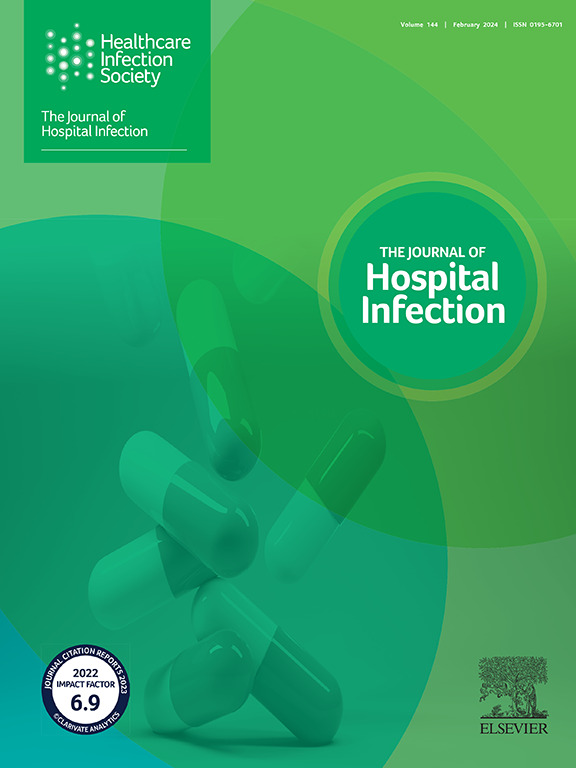Impact of postpartum hospital length of stay on infant gut microbiota: a comprehensive analysis of vaginal and caesarean birth
IF 3.1
3区 医学
Q1 INFECTIOUS DISEASES
引用次数: 0
Abstract
Background
The primary concern with prolonged hospitalization following birth is the risk of acquiring hospital-acquired infections (HAIs) caused by opportunistic bacteria, which can alter the early establishment of gut microbiota.
Objective
To assess the association between postpartum hospital length of stay (LOS) and the composition of gut microbiota at 3 and 12 months of age according to birth mode.
Methods
In total, 1313 Canadian infants from the CHILD Cohort Study were involved in this study. Prolonged LOS was defined as ≥2 days following vaginal delivery (VD) and ≥3 days following caesarean section (CS). The gut microbiota of infants was characterized by Illumina 16S rRNA sequencing of faecal samples at 3–4 months and 12 months of age.
Findings
Following prolonged LOS, VD infants with no exposure to intrapartum antibiotics had a higher abundance of bacteria known to cause HAIs in their gut, including Enterococcus spp. at 3 and 12 months, Citrobacter spp. at 3 months, and Clostridioides difficile at 12 months. Abundance of Enterococcus spp. or Citrobacter spp. at 3 months significantly mediated the association between LOS and low abundance of Bacteroidaceae, or higher Enterococcaeae/Bacteriodaceae or Enterobacterales/Bacteroidaceae abundance ratios at 12 months of age in VD infants without intrapartum antibiotic exposure. HAI-causing Enterobacterales were also more abundant in later infancy in infants with prolonged LOS following CS. In the absence of exclusive breastfeeding at 3 months or any breastfeeding at 12 months, Porphyromonadaceae (of Bacteroidota) were depleted in CS infants with prolonged LOS.
Conclusions
Prolonged hospital stay after birth is associated with infant gut dysbiosis.
产后住院时间对婴儿肠道微生物群的影响:阴道分娩和剖腹产的综合分析。
背景:产后长期住院的主要问题是有可能感染由机会性细菌引起的医院获得性感染(HAIs),这可能会改变肠道微生物群的早期建立:本研究旨在根据出生方式评估产后住院时间(LOS)与3个月和12个月时肠道微生物群组成之间的关系:本研究共涉及 1313 名加拿大婴儿,他们均来自 CHILD 队列研究(CHILD Cohort Study)。延长住院时间的定义是阴道分娩后超过 2 天和剖腹产后超过 3 天。通过对婴儿 3-4 个月和 12 个月时的粪便样本进行 Illumina 16S rRNA 测序,确定了婴儿肠道微生物群的特征:结果:在住院时间较长的阴道分娩(VD)婴儿中,母体产前未接触抗生素(IAP)的婴儿肠道中已知可导致HAIs的细菌数量较多,包括3个月和12个月时的肠球菌、3个月时的枸橼酸杆菌和12个月时的艰难梭菌。在未接触过 IAP 的 VD 婴儿中,3 个月时的肠球菌或枸橼酸杆菌丰度明显介导了 LOS 与类杆菌科低度丰度或 12 个月时较高的肠球菌科/杆菌科或肠杆菌科/类杆菌科丰度比之间的关系。在 CS 后住院时间较长的婴儿中,致人感染性疾病的肠杆菌科细菌也较多。如果没有进行 3 个月的纯母乳喂养或在 12 个月时进行任何母乳喂养,那么在住院时间较长的 CS 婴儿中,卟啉单胞菌属(类杆菌科)的数量就会减少:结论:出生后住院时间延长与婴儿肠道菌群失调有关。
本文章由计算机程序翻译,如有差异,请以英文原文为准。
求助全文
约1分钟内获得全文
求助全文
来源期刊

Journal of Hospital Infection
医学-传染病学
CiteScore
12.70
自引率
5.80%
发文量
271
审稿时长
19 days
期刊介绍:
The Journal of Hospital Infection is the editorially independent scientific publication of the Healthcare Infection Society. The aim of the Journal is to publish high quality research and information relating to infection prevention and control that is relevant to an international audience.
The Journal welcomes submissions that relate to all aspects of infection prevention and control in healthcare settings. This includes submissions that:
provide new insight into the epidemiology, surveillance, or prevention and control of healthcare-associated infections and antimicrobial resistance in healthcare settings;
provide new insight into cleaning, disinfection and decontamination;
provide new insight into the design of healthcare premises;
describe novel aspects of outbreaks of infection;
throw light on techniques for effective antimicrobial stewardship;
describe novel techniques (laboratory-based or point of care) for the detection of infection or antimicrobial resistance in the healthcare setting, particularly if these can be used to facilitate infection prevention and control;
improve understanding of the motivations of safe healthcare behaviour, or describe techniques for achieving behavioural and cultural change;
improve understanding of the use of IT systems in infection surveillance and prevention and control.
 求助内容:
求助内容: 应助结果提醒方式:
应助结果提醒方式:


